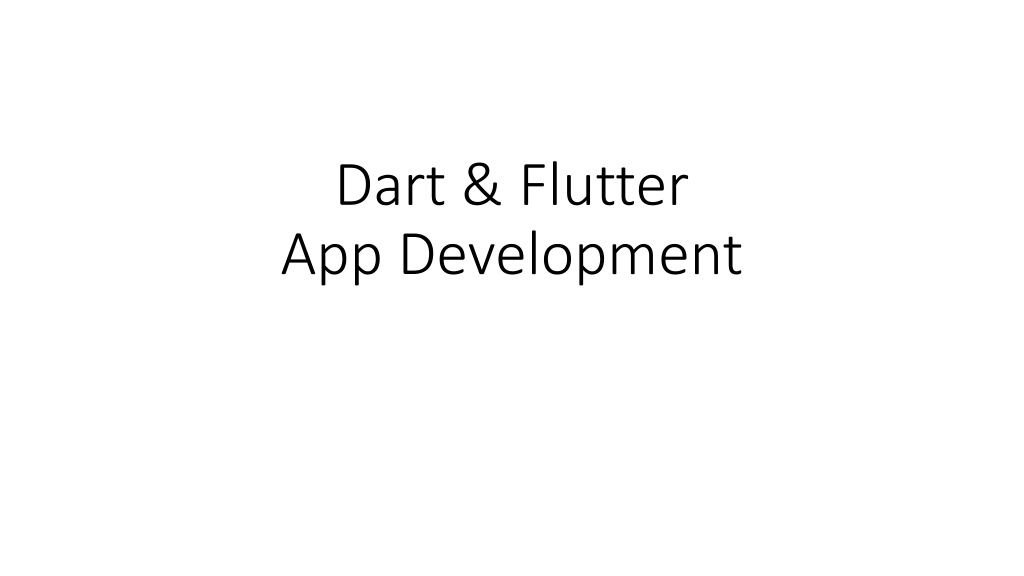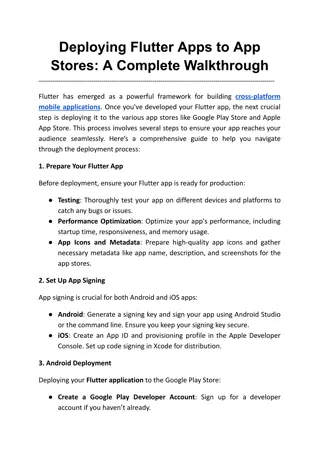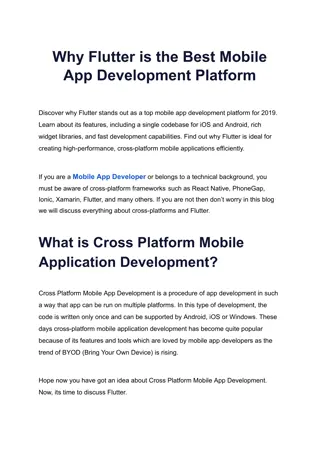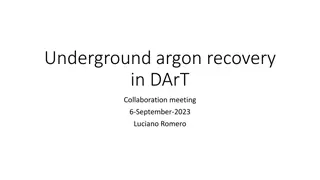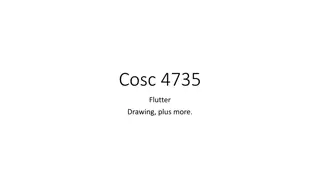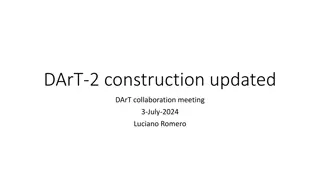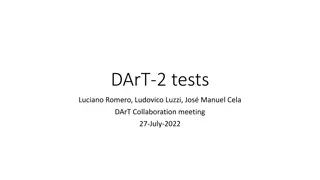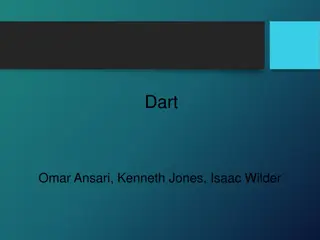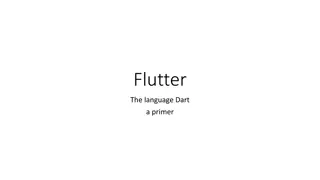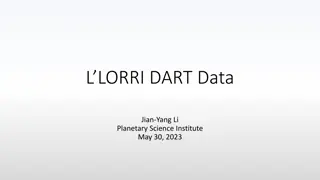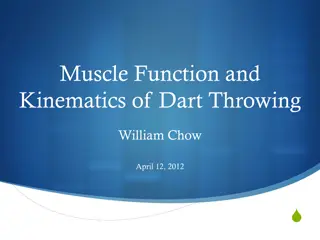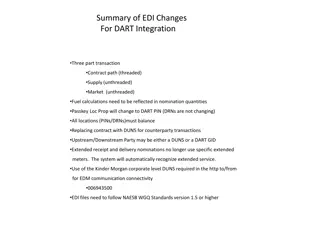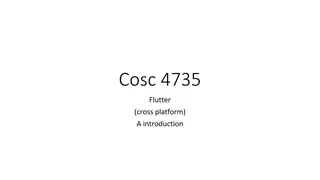Dart & Flutter Development Essentials
Learn about Dart programming fundamentals, setup, installation, and advantages compared to Java. Discover why Dart is favored for developing cross-platform mobile applications with Flutter and how it simplifies the development process. Explore key features of Dart programming and why it is gaining popularity among developers.
Download Presentation

Please find below an Image/Link to download the presentation.
The content on the website is provided AS IS for your information and personal use only. It may not be sold, licensed, or shared on other websites without obtaining consent from the author.If you encounter any issues during the download, it is possible that the publisher has removed the file from their server.
You are allowed to download the files provided on this website for personal or commercial use, subject to the condition that they are used lawfully. All files are the property of their respective owners.
The content on the website is provided AS IS for your information and personal use only. It may not be sold, licensed, or shared on other websites without obtaining consent from the author.
E N D
Presentation Transcript
Dart & Flutter App Development
Contents Setup Fundamentals Data Types String Type Conversion Constant Null Operators Loops Collection [List, Set, Map] Function Class Exception Handling
Setup Dart SDK To install Dart SDK first you visit- https://dart.dev
Install Visual Studio Code https://code.visualstudio.com/
Open Dartpad https://dartpad.dev
Fundamentals What is Dart Programming Dart is a main programming language to develop cross platform mobile application using flutter framework. Why Dart Programming Dart has a declarative and programmable layout that is easy to read and visualize. Hence, Flutter doesn't require a separate declarative layout language like XML. It is easy for Flutter to provide advanced tooling since all the layout in one language and in a central place.
Why is Dart better than Java? Dart is a programming language used by flutter, flutter is used to create cross-platform apps (for android & ios). If your plan is to only create apps for android only you should definitely go with java, it will run and look better in almost every way.
What is the advantage of Dart? Dart is an interesting programming language with features to facilitate Web, mobile and command line apps. Its major advantages are its stability and ease of learning. In the case of Web applications, the combination with AngularDart makes it a very powerful tool. Four Reasons Dart enforces object-oriented programming Dart compilers are quick and reliable Dart has a clean and type-safe syntax Dart has a strong developer community
Open Source Dart is an open-source programming language, which means it is freely available. It is developed by Google, approved by the ECMA standard, and comes with a BSD license.
Platform Independent Dart supports all primary operating systems such as Windows, Linux, Macintosh, etc. The Dart has its own Virtual Machine which known as Dart VM, that allows us to run the Dart code in every operating system.
Concurrency Dart is an asynchronous programming language, which means it supports multithreading using Isolates. The isolates are the independent entities that are related to threads but don't share memory and establish the communication between the processes by the message passing. The message should be serialized to make effective communication. The serialization of the message is done by using a snapshot that is generated by the given object and then transmits to another isolate for desterilizing.
Flexible Compilation Dart's Dart's flexibility flexibility in in compilation compilation and and execution execution doesn't doesn't stop stop there there. . For For example, example, Dart Dart can can be be compiled compiled into into JavaScript JavaScript so so it it can can be be executed executed by by browsers browsers. . This This allows allows code code reuse reuse between between mobile mobile apps apps and and web web apps apps. . Developers Developers have have reported reported as as high high as as 70 70% % code code reuse reuse between between their their mobile mobile and and web web app app
Type Safe The Dart language is type safe: it uses a combination of static type checking and runtime checks to ensure that a variable's value always matches the variable's static type, sometimes referred to as sound typing. Although types are mandatory, type annotations are optional because of type inference
Object-Oriented Dart is an object-oriented programming language and supports all oops concepts such as classes, inheritance, interfaces and optional typing features. It also supports advance concepts like mixin, abstract, classes, reified generic, and robust type system.
Extensive Libraries Dart consists of many useful inbuilt libraries including SDK (Software Development Kit), core, math, async, math, convert, html, IO, etc. It also provides the facility to organize the Dart code into libraries with proper namespacing. It can reuse by the import statement.
Flexible Compilation Dart provides the flexibility to compile the code and fast as well. It supports two types of compilation processes, AOT (Ahead of Time) and JIT (Just-in-Time). The Dart code is transmitted in the other language that can run in the modern web-brewers.
Objects The Dart treats everything as an object. The value which assigns to the variable is an object. The functions, numbers, and strings are also an object in Dart. All objects inherit from Object class.
Browser Support The Dart supports all modern web-browser. It comes with the dart2js compiler that converts the Dart code into optimized JavaScript code that is suitable for all type of web-browser.
Community Dart has a large community across the world. So if you face problem while coding then it is easy to find help. The dedicated developers' team is working towards enhancing its functionality.
Key Points to Remember Everything in Dart is treated as an object including, numbers, Boolean, function, etc. like Python. All objects inherit from the Object class. Dart tools can report two types of problems while coding, warnings and errors. Warnings are the indication that your code may have some problem, but it doesn't interrupt the code's execution, whereas error can prevent the execution of code. Dart supports generic types, like List<int>(a list of integers) or List<dynamic> (a list of objects of any type).
Final And Const Keyword in Dart: These keywords are used to define constant variable in Dart i.e. once a variable is defined using these keyword then its value can t be changed in the entire code. These keyword can be used with or without data type name
Num a =5; Print(num); Double d= 4.8; Print(d); Var v= 3.6; Dynamic d = 34;
Syntax for final // Without datatype final variable_name // With datatype final data_type variable_name
Syntax for Const: // Without datatype const variable_name // With datatype const data_type variable_name
Example void main() { // Assigning value to geek1 variable without datatype final geek1 = "Geeks For Geeks"; // Printing variable geek1 print(geek1); // Assigning value to geek2 variable with datatype final String geek2 = "Geeks For Geeks Again!!"; // Printing variable geek2 print(geek2); }
Example void main() { // Assigning value to geek1 variable without datatype const geek1 = "Geeks For Geeks"; // Printing variable geek1 print(geek1); // Assigning value to geek2 variable with datatype const geek2 = "Geeks For Geeks Again!!"; // Printing variable geek2 print(geek2); }
By + Operator Example: Using + operator to concatenate strings void main() { // Assigning values // to the variable String gfg1 = "Geeks"; String gfg2 = "For"; // Printing concatenated result // by the use of '+' operator print(gfg1 + gfg2 + gfg1); }
By String Interpolation Example: Using string interpolation to concatenate strings void main() { String gfg1 = "Geeks"; String gfg2 = "For"; // interpolation without space print('$gfg1$gfg2$gfg1'); print('$gfg1 $gfg2 $gfg1'); }
By List_name.join() Method list_name.join("input_string(s)"); This input_string(s) are inserted between each element of the list in the output string. Example: Using list_name.join() concatenate strings
void main() { // Creating List of strings List<String> gfg = ["Geeks", "For" , "Geeks"]; // Joining all the elements // of the list and // converting it to String String geek1 = gfg.join(); // Printing the // concatenated string print(geek1); // Joining all the elements // of the list and converting // it to String String geek2 = gfg.join(" "); // Printing the // concatenated string print(geek2); }
Flow Statement Decision-making statements Looping statements Jump statements
of Decision-making statement. Dart provides following types If Statement If-else Statements If else if Statement Switch Case Statement
Dart Looping Statements Dart looping statements are used to execute the block of code multiple-times for the given number of time until it matches the given condition. These statements are also called Iteration statement. Dart for loop Dart for .in loop Dart while loop Dart do while loop
Jump Statements Dart Break Statement Dart Continue Statement
Loops for loop for in loop for each loop while loop do-while loop
for loop For loop in Dart is similar to that in Java and also the flow of execution is the same as that in Java for(initialization; condition; test expression){ // Body of the loop }
Example void main() { for (int i = 0; i < 5; i++) { print('GeeksForGeeks'); } }
forin loop for (var in expression) { // Body of loop } void main() { } var ds = [ 1, 2, 3, 4, 5 ]; for (int i in ds { print(i); }
for each loop The for-each loop iterates over all elements in some container/collectible and passes the elements to some specific function collection.foreach(void f(value)) f( value): It is used to make a call to the f function for each element in the collection. void main() { var ds = [1,2,3,4,5]; ds.forEach((var num)=> print(num)); }
Break and Continue void main() { int count = 1; while (count <= 10) { print( ds, you are inside loop $count"); count++; } } print( sh, you are out of while loop"); if (count == 4) { break; }
Dart Collection List<E>: A List is an ordered group of objects. Set<E>: Collection of objects in which each of the objects occurs only once Map<K, V>: Collection of objects that has a simple key/value pair-based object. The key and value of a map can be of any type. Queue<E>: A Queue is a collection that can be manipulated at both ends. One can iterate over a queue with an Iterator or using forEach. DoubleLinkedQueue<E>: Doubly-linked list based on the queue data structure. HashMap<K, V>: Map based on hash table i.e unordered map. HashSet<E>: Set based on hash table i.e unordered set. LinkedHashMap<K, V>: Similar to HashMap but based on LinkedList. LinkedHashSet<E>: Similar to HashSet but based on LinkedList. LinkedList<E extends LinkedListEntry<E>>: It is a specialized double-linked list of elements. LinkedListEntry<E extends LinkedListEntry<E>>: An element of a LinkedList. MapBase<K, V>: This is the base class for Map. UnmodifiableListView<E>: An unmodifiable List view of another List. UnmodifiableMapBase<K, V>: Basic implementation of an unmodifiable Map. UnmodifiableMapView<K, V>: Unmodifiable view of the map.
